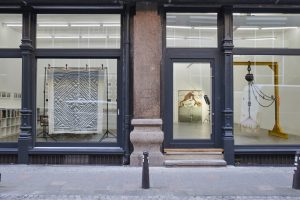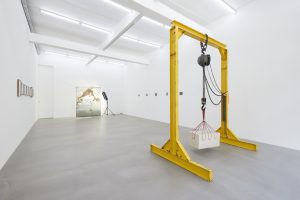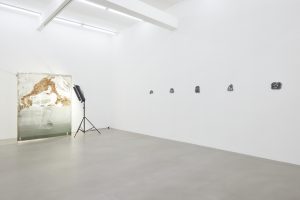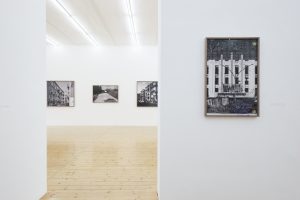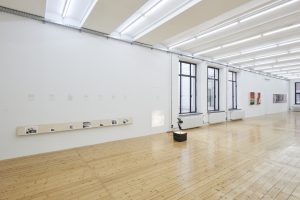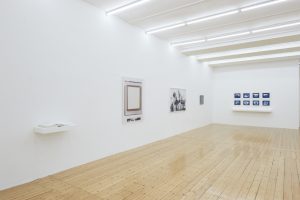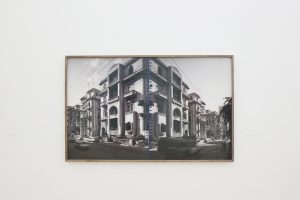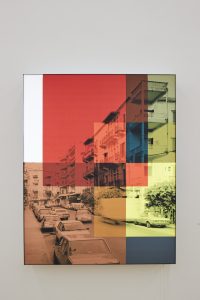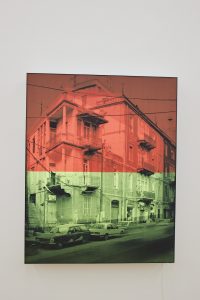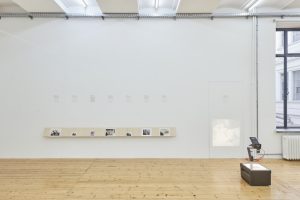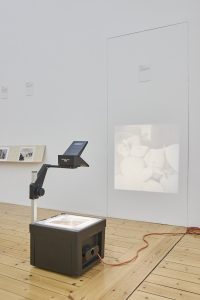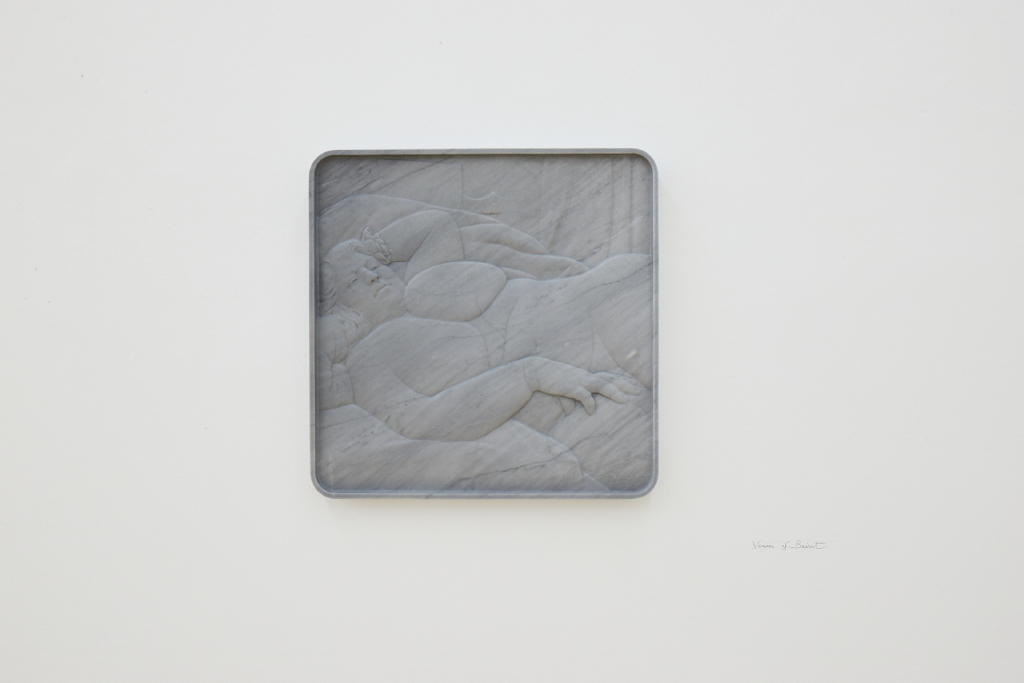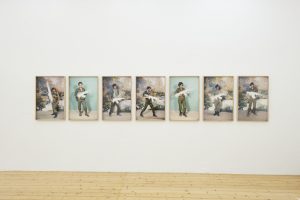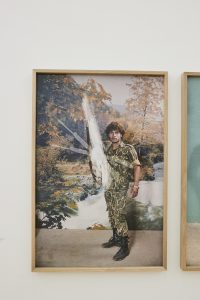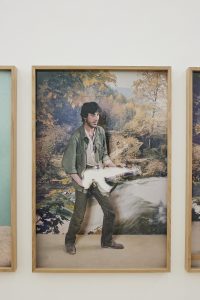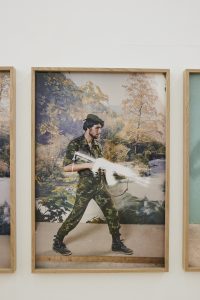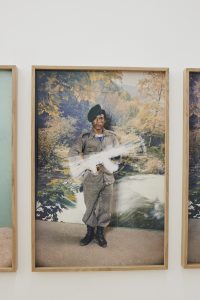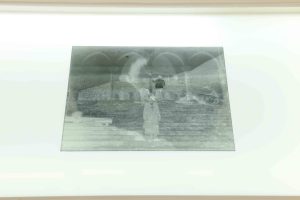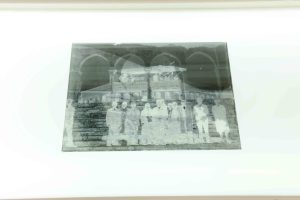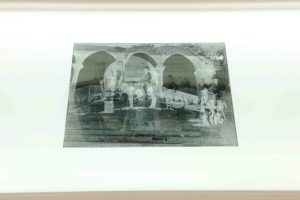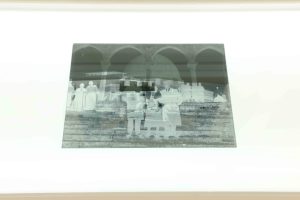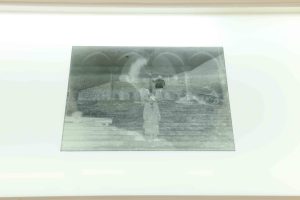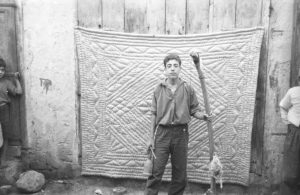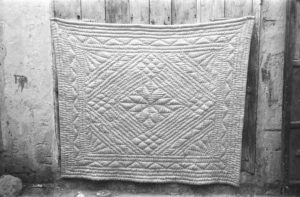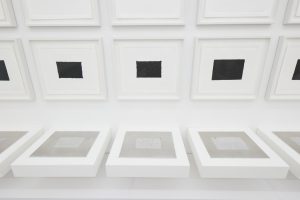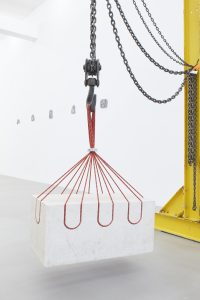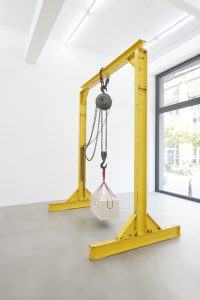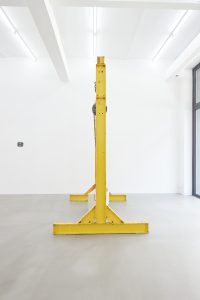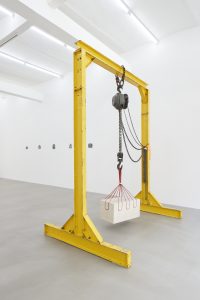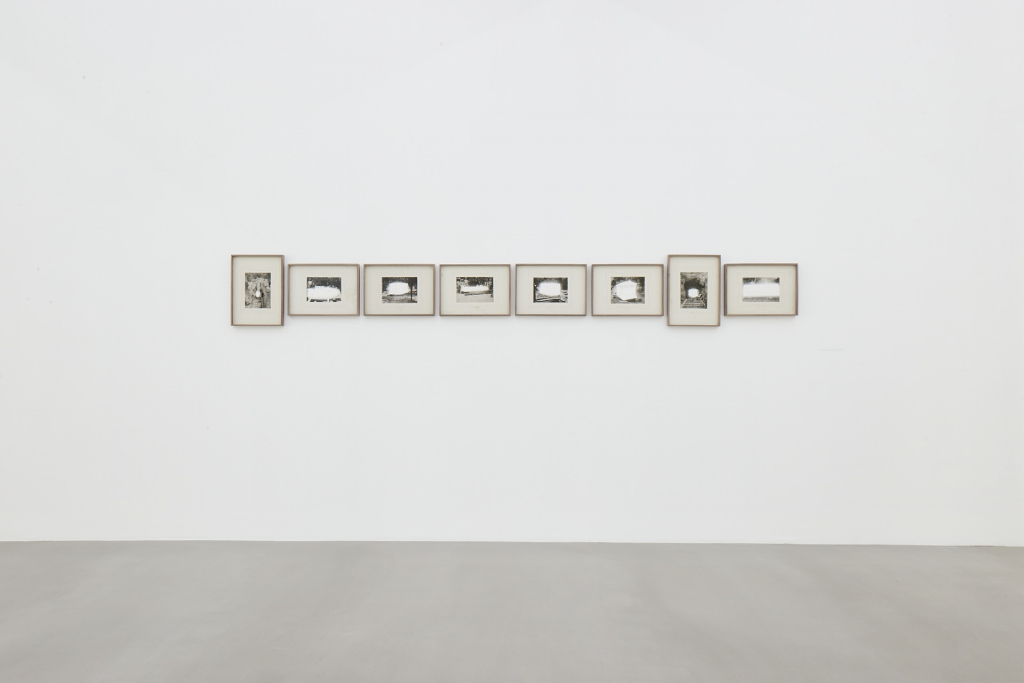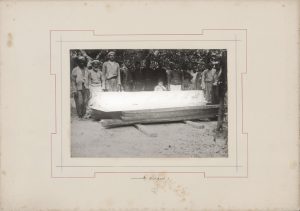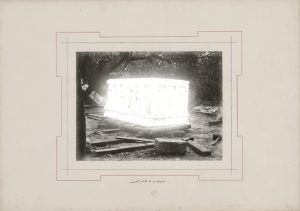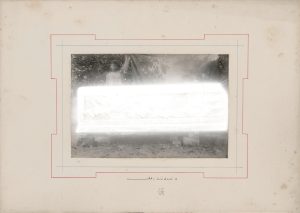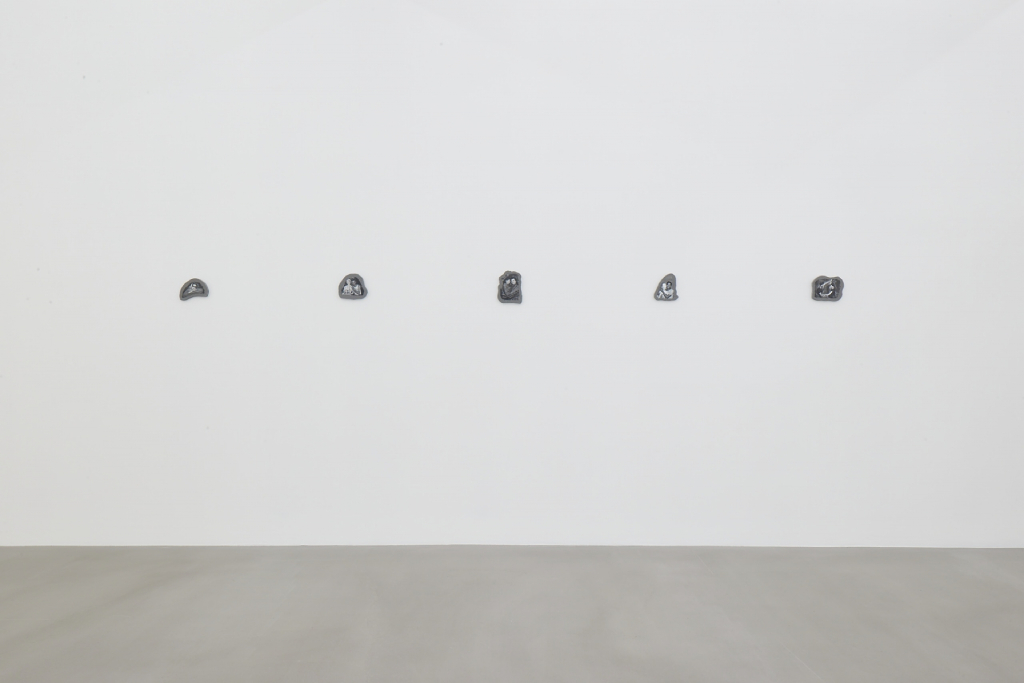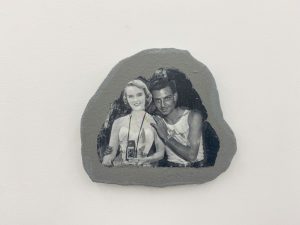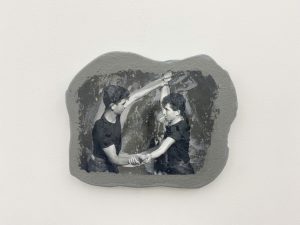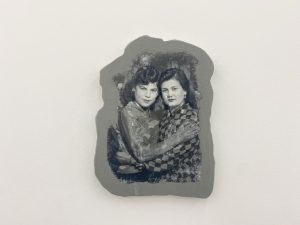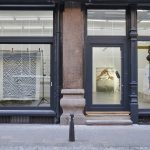Sfeir-Semler Gallery is happy to inaugurate its extended ground floor space with a solo show by Akram Zaatari, whose exhibitions we have been presenting since 2005 in both our Beirut and Hamburg galleries.
Three snapshots and a long exposure takes the plasticity attributed to photography in the digital era as a common feature among works that engage with the reconfiguration of photographic documents. The migration of elements from one photograph to another, their occasional withdrawal, their contamination of one another or their physical recreation, after their vanishing, as objects based on their photographic or textual descriptions, constitute the palette that was used while making the different works in this exhibition.
Exhibited on the first floor of the gallery, the series that gave its title to the show focuses on post-civil-war iconography from Beirut. In the mid-1990s, while the reconstruction project of the city’s downtown was provoking heated debates, Zaatari started documenting the first belt around the city center, with the aim of indexing houses typology for a book project initiated by then professor of Urban Planning and Design at the American University of Beirut, Robert Saliba. The images, taken with a 4×5” view camera, were never used until Zaatari returned to them nearly twenty-five years later. Printed in large formats, the landscapes, which Zaatari qualifies as missing any specific focal points, might have captured an atmosphere of speculation, a gentrification on its way, and an urban transformation, back then still latent in the neighborhoods located on both sides of the green line that had divided Beirut between East and West from 1975 to 1990.
Within the same space, The Fold, 2018, explores specific phenomena that captured Zaatari’s interest in photographs from the collection of the Arab Image Foundation (AIF). The Fold presents a model for interpreting photographs, thus providing keys to their reconfiguration. Most surprising is the photograph form Beirut in the 1920s – 1930s showing a reclining nude woman, originally attributed to the late Kamal Haddad, and taken to be turned into a painting. It’s transformed by Zaatari into a bas-relief in marble. Probably never meant to be displayed as a photograph, given social constraints in Lebanon at that time, the fact that it was printed as a transparency makes it, for the artist, a middle step in an artistic practice and not an end itself.
Beirut, Lebanon, 1920s – 1930s
Laser print of monochrome transparency on film, 29.6 x 23.7 cm Photographer: Farid Haddad
Collection: George Haddad
Courtesy of the AIF
This transparency came as a set with other transparencies that re- present nude women posing on a bed and are attributed to Dr. Farid Haddad from the 1920s or 1930s. Haddad was a Lebanese medical doctor who practiced painting in addition to medicine, and who might have produced some paintings based on these photographs, which explains why they were printed on transparencies, thus anticipating their use on overhead projector.
Akram Zaatari, Venus of Beirut from: The Fold, 2022, 3D routed, hand-polished Grey Bardiglio imperiale, 50,5 x 50,5 x 4 cm
Akram Zaatari, Un-Dividing History, 2017, 4 pairs of glass plates and 8 cyanotype contact-prints, 18 x 24 cm each
Photographic Currency, 2019, presented in the window of the new ground floor space of the gallery, is based on dozens of images of traditional quilts made in Saida, South Lebanon, gathered over the years by Zaatari whenever he encountered them in the archive of photographer Hashem el Madani. These had been taken in the 1950s and functioned as a loose catalog for quiltmakers, allowing them to keep records of designs and stitch patterns, to show to potential clients. Zaatari considers those photos as the external memory of quiltmakers, thus not really end products in themselves. They are used here as currency towards objects (quilts) remakes.
Facing it, Against Photography, 2017, combines one of the most advanced 3D recording techniques to trace the reliefs of aging negatives, with one of the most traditional press methods to reproduce the surface of decayed negatives without the images they show.
On the main space of the ground-floor, are works that engage directly with the archeological gesture of digging earth looking for finds, and the excitement that accompanies their first contemplation. Archeology, 2017, consists of a large glass piece that is meant to represent a replica of a small photographic glass plate that Zaatari had collected for the AIF in the late 1990s. The negative plate, which was originally exposed by Antranick Anouchian, shows an athlete posing nude, but found missing major parts. Its replica was enlarged way beyond its original size to match Zaatari’s thrill at the plate’s first encounter.
Akram Zaatari, Archeology, 2017, Pigment inkjet print on gelatin treated glass and mixed media, Pigment inkjet print on gelatin treated aluminum sheet, Floor standing preservation flood light, 210 x 160 cm
The Tabnit Monolith, 2022, installed hanging from a simple and primitive crane, is a replica of a giant monolithic boulder that sealed king Tabnit’s tomb almost 1900 years before it was completely destroyed during its excavation in 1887. King Tabnit was a Phoenician king, who ruled Saida in the 6th century BC. The discovery of his mummy alongside 19 sarcophagi in what became known as Sidon’s Necropolis was one of the earliest achievements of Ottoman archaeology under the leadership of Osman Hamdi Bey.
An Extraordinary Event, 2018, was based on Hamdi Bey’s photographs of those finds displayed in the citrus grove immediately upon their excavation, with workers and diggers standing often in the background. Zaatari erases their central object to highlight the location and people who appear in the background.
Akram Zaatari, An Extraordinary Event, 2018, 8 inkjet prints, 35 x 56 cm each
On the opposite wall, are presented elements from a site-specific display, Footnotes to Hashem el Madani’s Studio Practices, 2018, which were initially installed directly onto the exhibition walls at New Art Exchange, Nottingham. They are presented here as detached archeological objects.
Akram Zaatari, Footnotes to Hashem el Madani’s Studio Practices, Print transfers on gypsum board, 2018.
The exhibition ultimately communicates Zaatari’s expanded definition of photography, acknowledging the fluidity while merging media and forms of production, allowing for ellipsis, short-circuits that remain crucial while reading conflicting yet shared histories.


